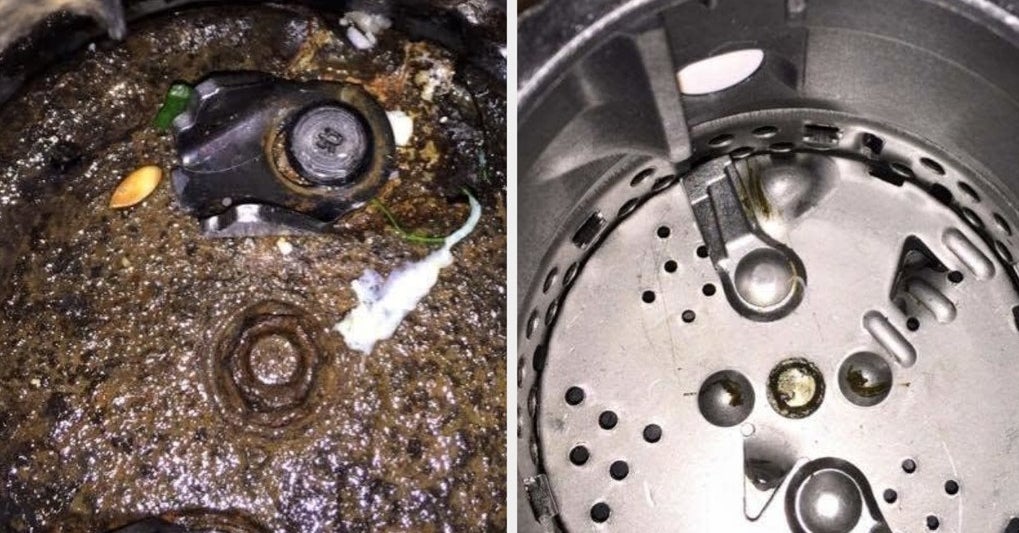There are several ways to make this appliance smell better. The first method involves flushing your disposal with distilled white vinegar or baking soda. If this does not work, you can try using bleach. It will help get rid of odors caused by food particles stuck in the pipes. But be careful not to use too much bleach. It might damage your pipes.
Why do I have a smelly garbage disposal?
Use lemon peels to deodorize your disposal. Cut a lemon into half-inch strips and put them in the drain. Run the disposal for about ten to fifteen seconds. The citrus peels will coat the disposal’s rubber housing and plate, giving it a fresh smell. Also, you can freeze the mixture into ice cube trays and use them to clean your garbage disposal.
Avoid putting foods in your garbage disposal if possible. Grease is liquid when hot but thickens and can cause odor in the disposal. Starchy foods can also contribute to the smell. Potato, fruit skins, and peels can also build up around the drain, promoting bacterial and mold growth. Coffee grounds also can splash up under the gasket, clogging the disposal and causing it to smell.
Your p-trap might be the cause of your smelly garbage disposal. The p-trap is the curved pipe underneath your kitchen sink. It is responsible for separating sewage gases from garbage and organic material. Without water, the p-trap won’t be able to perform its job. If you don’t have any water in your p-trap, you should ensure it is filled with water. If it doesn’t, you may leak. If you have a leaky p-trap, it is time to replace it.
Can I put bleach in my garbage disposal?
Though it kills germs and smells, the chlorine in bleach can damage your disposal. Rather than using bleach to clean your garbage disposal, try one of the natural solutions. Both methods have a pungent odor but will clear up odors faster. Also, they don’t pose any respiratory risks.
A lemon or two in your garbage disposal will also help remove the odor. Lemons are particularly strong, so cutting them up and tossing them into the disposal will make them dissolve in the vinegar. Lemons will also remove the bleach odor. Drop a lemon into the disposal and run the water. This should flush away any odors and leave your disposal smelling fresh. If you don’t have lemons, try grinding them in the garbage disposal.
Another natural solution for odor-causing food is lemon and baking soda. Lemons are a natural freshener that will clean the blades and eliminate leftover food residue. But be sure to follow the directions on the package or bottle. Bleach, while effectively killing germs, can also harden the grease in your disposal unit. And make sure to use only diluted bleach. Then, run the disposal with warm water for several minutes to remove the odor.
Why does my garbage disposal smell like a sewer?
The garbage disposal may smell bad because of the buildup of food particles inside it. If you do not run the garbage disposal as often as you should, this can lead to a clog, causing an unpleasant odor. If you cannot identify the source of the smell, check the air gap at your disposal. It may also be blocked by debris on the roof. To prevent clogs and the smell accompanying them, follow these tips to use the garbage disposal properly.
If you suspect your garbage disposal smells from your plumbing, you can try a few things to eliminate it. You can run hot water through the drain to clean it. Alternatively, you can try grinding some ice or citrus peels and running them through the disposal. This method will remove the food debris and prevent an unpleasant smell. However, if the smell is persistent, it may signify a plumbing problem.
In some cases, the cause of the smell comes from the accumulation of food particles at your disposal. When food particle accumulates, they cause bacteria to grow and emit an unpleasant odor. Sometimes, insufficient running water can also lead to the accumulation of food particles. This can also lead to the smell coming from the pipes. Furthermore, the odor may come from the residue under the rubber splash guard. As with any mechanical device, there are several ways to prevent this odor.
Is baking soda and vinegar safe for pipes?
They form a strong, bubbly mixture similar to foaming drain cleaners when mixed. The bubbling action loosens the clog by releasing carbon dioxide and water into the drain. The boiling water in the solution also creates pressure, which pushes the goop out of the pipe. If you want a homemade drain cleaner, follow the same steps as with commercial drain cleaners.
One reason vinegar and baking soda are safe for pipes is that they don’t cause damage to your plumbing system. Some commercial cleaning solutions can damage your pipes. They contain sulfuric acid, hydrochloric acid, or sodium hydroxide, all of which cause heat buildup when mixed with water. PVC pipes are especially susceptible to heat, and chemicals can damage them. Conversely, vinegar won’t cause any damage to your pipes because it contains 4 to 8% acetic acid.
When used together, vinegar and baking soda can unclog drains. However, following the instructions carefully is important because the mixture can create dangerous gas if you don’t follow them. You should test the mixture in a small area first. Using the mixture together, however, can help your drains clear up. Before using it in any larger area, you should also test the mixture on a hidden plumbing part.
Does boiling water flush down food particles?
If you have a clogged garbage disposal, you’ll want to ensure you’re running enough hot water to clear the disposal. Using boiling water to flush out the garbage disposal drain can also help. After running hot water for a while, pour a solution of baking soda and vinegar, then wait five or ten minutes. The mixture should move any food particles in the drain. If you don’t have a disposal, try running hot water through the drain to flush out the remaining food particle.
The hotter the water, the better. Hot water is ideal for washing dishes, but it only sometimes works well with garbage disposals. While it does help loosen food particles and prevent blockage, it can also cause a buildup in the pipes. If you don’t use cold water for garbage disposal cleaning, you could have problems down the road. When you use hot water, you risk clogging the pipes.
To clear the garbage disposal, run a cold water stream and pour a little dish soap down the drain. This will prevent odors and ensure no leftover is stuck in the drain pipes. Boiling water can loosen the particles that have become stuck. However, boiling water will also destroy the blades in the garbage disposal. If you need help determining whether boiling water can clean a garbage disposal, you can use a combination of both.
How do you deodorize a sink drain?
The two-ingredient mixture of vinegar and baking soda will create a fizzy chemical reaction, which breaks up clogs and kills the bacteria that cause foul odors. You can use a small amount of the solution at a time, and it’s important to wait at least 15 minutes before running hot water down the drain.
A few ways to deodorize your drain are available online. Some require no special tools, and all rely on household ingredients to eliminate odors. Most people find that a combination of these methods works best. If you’re having trouble deciding which is best, we’ll break down some of the most common methods. If none of these methods work, try one of the alternatives.
Another option is to mix equal parts of baking soda and vinegar. Mix the two ingredients in a bowl. Leave this for 20 minutes, and then flush with hot water. Lemon juice will also deodorize your sink, as lemon contains a fresh, citrusy smell. Borax, a common household cleaner, can also work for tough cleaning jobs. Add three tablespoons to the drain and leave for a few minutes before draining the mixture.
What is a good drain deodorizer?
If you want to spend less money on a commercial drain cleaner, you can try baking soda and salt as a DIY drain cleaner. These ingredients work together to break up clogs and remove odor-causing bacteria. Pour a little mixture into the drain and run hot water to dissolve the baking soda. Repeat the process once or twice weekly to keep your drain smelling fresh.
To save money, you can also use a homemade drain deodorizer. These solutions are easy to use and will leave your drain smelling fresh. You can try them weekly to keep the smells away, or you can call a plumber if you want to use them daily. Once a week, a small amount of the product will work well and eliminate the problem.
For a more permanent solution, mix baking soda with two cups of water and pour it down the drain. The mixture will fizz and break up any clogs. Use caution with this product because it may damage your pipes. Before pouring the mixture down the drain, pour it a small amount at a time and repeat as needed until the smell disappears. Then, pour hot and cold water until the drain smells fresh and clean.
Conclusion
Your garbage disposal smells because of food waste like citrus fruit, coffee grounds, or food scraps stuck-on debris. It is understandable, considering all the food waste thrown down there daily. Fix the stinky garbage disposal once and for all. You’ll find it erases the scent by trying to pour just a little bleach down the disposal as cold water runs. Another way is to put a big cup full of ice cubes into the disposal, turn it on, and then add about half a cup of kosher or rock salt.



